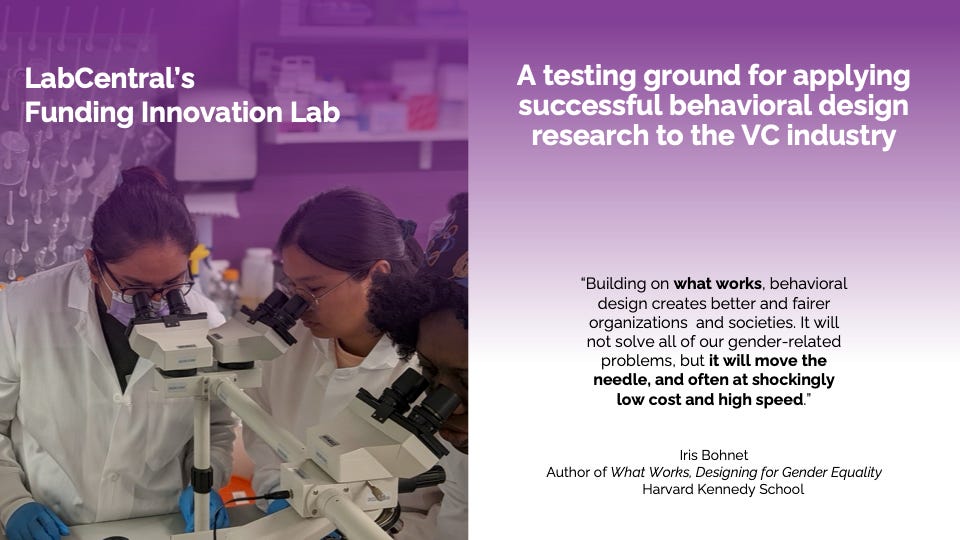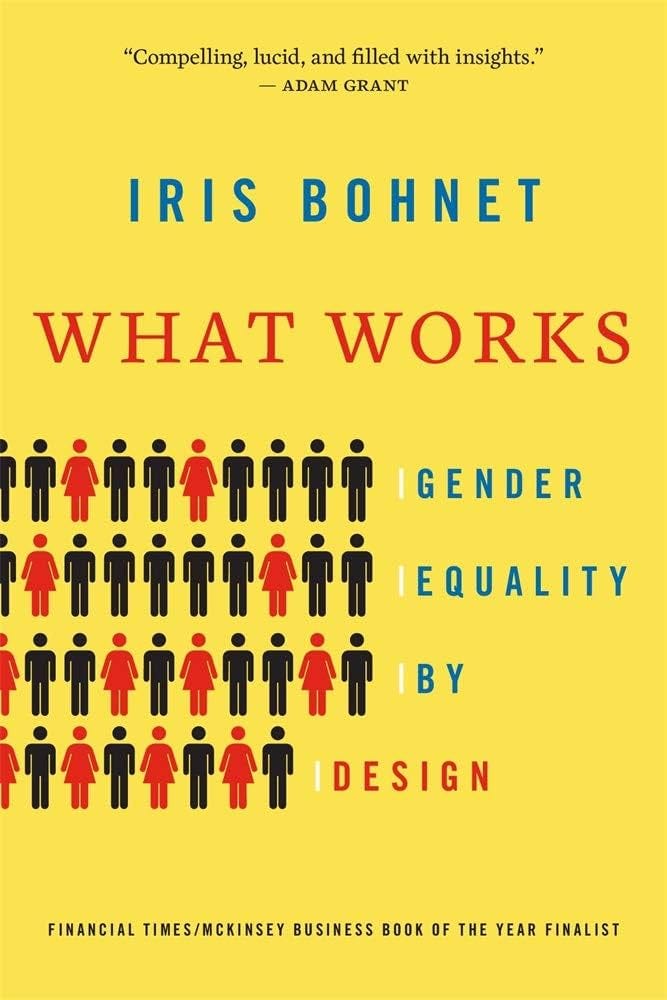Welcome to LabCentral’s Funding Innovation Lab newsletter! Each Wednesday, we’ll be sharing a quick note from Beth McKeon, as well as timely articles to spark ideas and conversations about how the Funding Innovation Lab can identify critical challenges in the biotech funding model, rapidly test potential interventions, and share results with our community.
As I think about the vision for LabCentral’s Funding Innovation Lab, I’m reminded of the origin story of OXO, the kitchen tool brand. OXO was founded as a brand that solved an important problem - helping people with arthritis use kitchen tools like jar openers and vegetable peelers - that had previously been hard to hold or manipulate.
On OXO’s “about us” page on their website, they refer to the “Universal Design philosophy in which designers take into consideration the greatest variety of needs in order to create products that are usable by as many people as possible.” (Source: National Museum of American History)
The thing is - OXO’s kitchen tools are better for all of us, not just the folks with arthritis. I may have great grip strength and dexterity, but I’d much rather use my OXO can opener than one of the flimsy metal ones that used to be common in every kitchen. By designing for a wider set of needs, rather than a more limited audience with greater privilege or advantage, OXO created a tool that makes life better for everyone.
I want to invoke this universal design principle in the work we are doing with LabCentral’s Funding Innovation Lab. Current practices and frameworks for how we think about the funding process - for both funders and founders - were codified around the realities of a limited group of people, not taking into consideration the way many founders cannot access those advantages.
This is a design problem, one that can be redesigned and reconfigured to meet the needs of more people. And when we do, we don’t just create benefits for diverse founders, who are disadvantaged in the current systems. Everyone benefits. This is a win-win for funding equity and health equity.
What is the Funding Innovation Lab?
Subscribe to the newsletter
If you are passionate about increasing funding equity for women and people of color, please be sure to subscribe to this newsletter!
We’ll be open-sourcing our work and would love to include you in the process as well. The newsletter is the best way to find out about opportunities to get involved.
What we’re reading
The Funding Innovation Lab relies on a large body of scholarship and research-backed approaches. Each week, we’ll share snippets from the books we’re reading that provide inspiration for the kinds of experiments we may run in the future.
What Works: Gender Equality by Design, by Iris Bohnet (Amazon)
In this book, Dr. Bohnet, co-director of the Women and Public Policy Program at Harvard Kennedy School, lays out the case for an approach like the Funding Innovation Lab concept, using a model of experimentation to discover the particular forms of behavior design that work best in various scenarios and for specific purposes. She lays out 36 strategies that have been proven to work in other industries that serve as some inspiration for the experiments we may run.
“We can reduce gender inequality. We will use all we know about how the mind works, how biases influence decisions and outcomes, and how behavioral design can alter these. We can affect this change not in a matter of decades but in a matter of years. Even good design cannot solve all our problems. But behavioral design is the most useful and underutilized tool we have. Truth be told, we collectively can do this only if you take part.”
The Funding Innovation Lab is a non-profit program, founded by LabCentral and led by Beth McKeon, with a mission to increase funding equity for women and BIPOC founders in the life sciences.
The Funding Innovation Lab, convenes and supports innovators from across VC, universities, and entrepreneurial support organizations, as they run rapid design sprints to solve the persistent systemic barriers and bias in the fundraising and capital deployment process. The Funding Innovation Lab has an open-source policy, sharing the wins and fails from these experiments here on Substack and with its community of practitioners with the goal to see widespread adoption and replication of emerging best practices in this field.







The "OXO" approach makes me think of the "curb cut effect" described by Stanford https://ssir.org/articles/entry/the_curb_cut_effect. Not sure yet how to apply to fundraising, but it's a great concept!